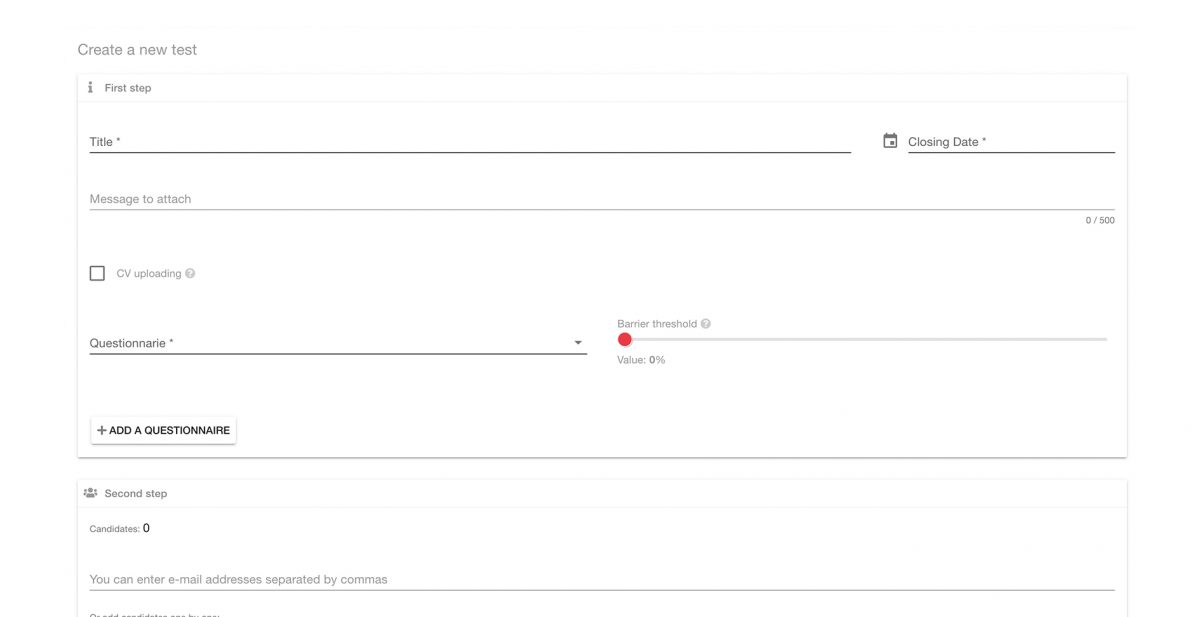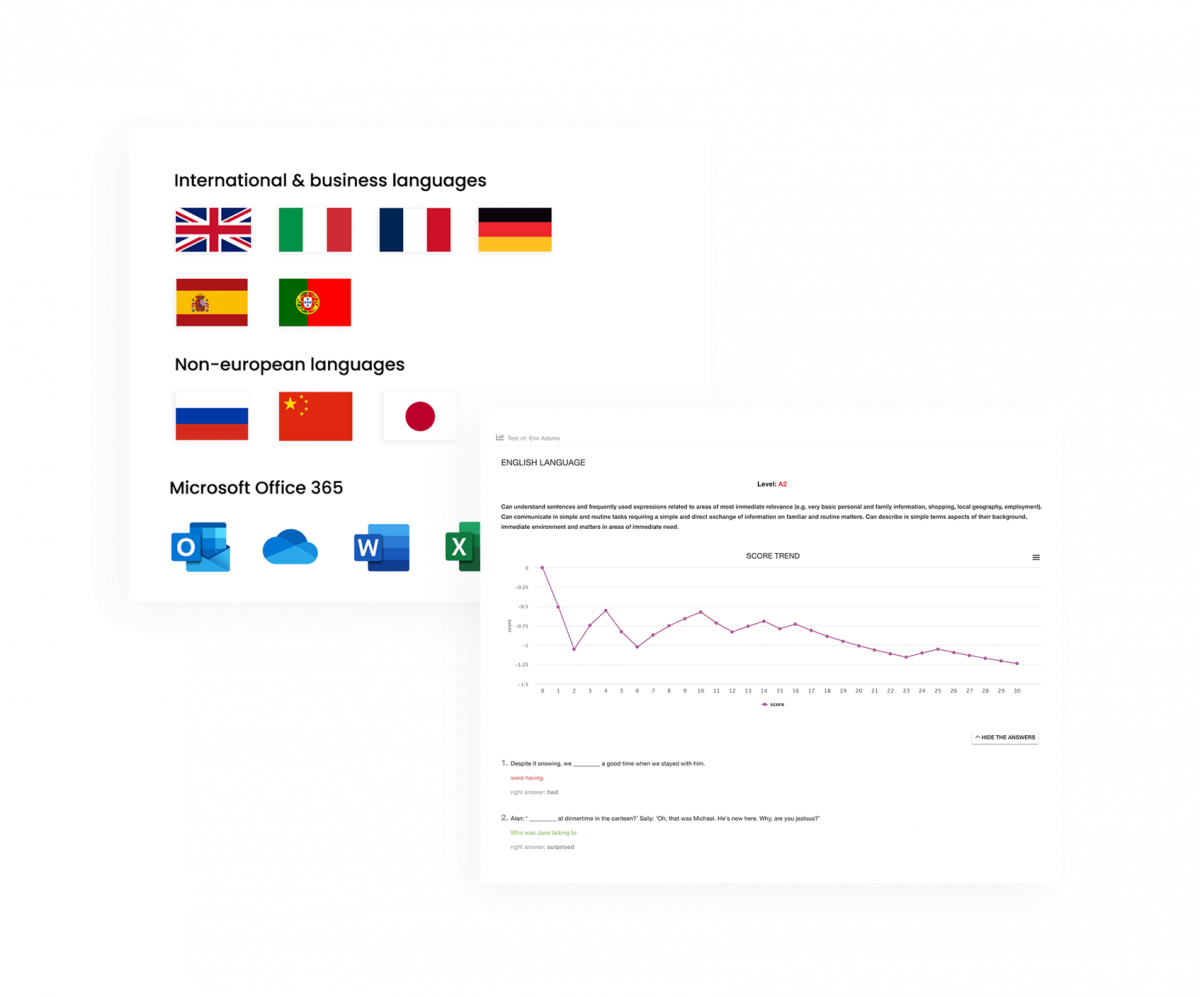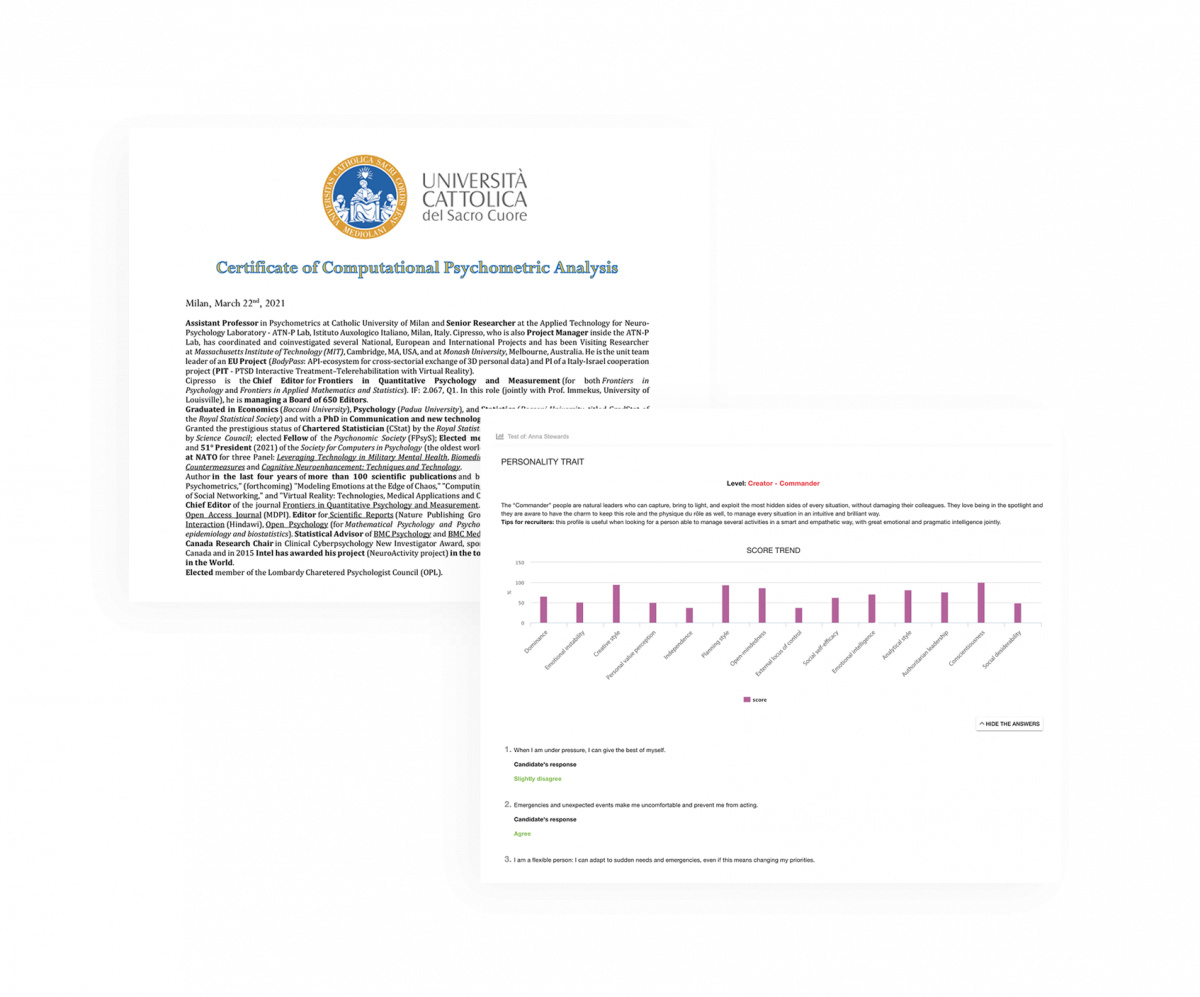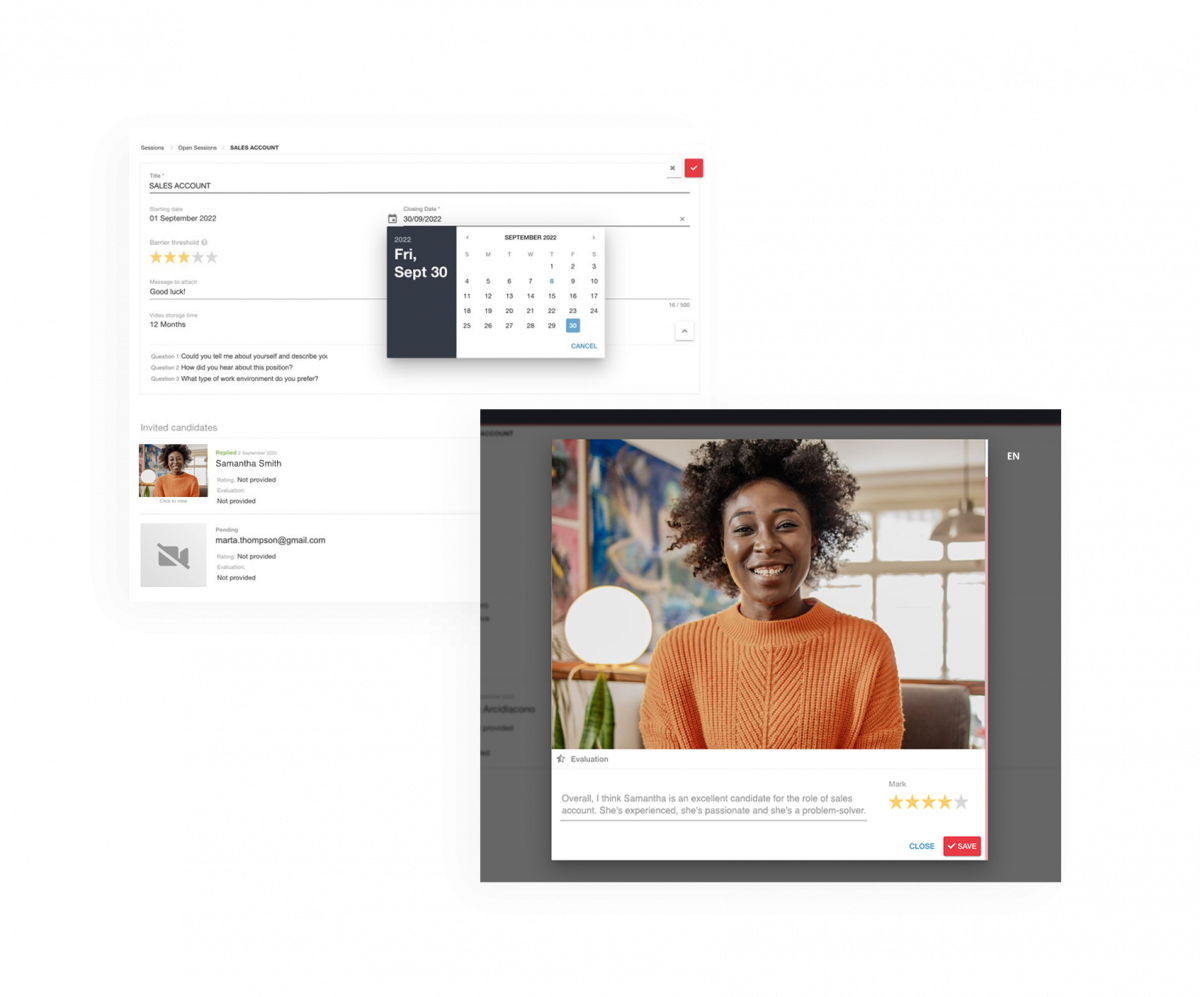Tests on international, non-european and business languages
| Reference products | ExaminLab |
| Release month | April 2020 |
Index of contents
1.Why should I choose ExaminLab?
2.Can ExaminLab be integrated with other tools and platforms?
3. Uniqueness of tests delivered
4. What are the main advantages of an online testing platform?
5. Who assures me of the validity of the tests provided?
6. What makes ExaminLab tests so different from other language/professional tests?
7. In which languages is ExaminLab available? Can I ask for additional languages?
8. Is the solution easy to use?
9. Where is the platform hosting located? Where is my data?
10. Are you GDPR compliant?

1. What are language tests?
A cloud solution for language skills assessment.
Language tests allow quickly, efficiently and accurately verifying the actual level of language proficiency of candidates and employees (from basic level A1 to proficiency level C2).
These tests are structured according to the Common European Framework of Reference for Modern Languages (CEFRL) and are supervised by the Italian school SSML (Higher School for Linguistic Mediators) in Ancona, a university institute recognised by the Italian Ministry of Education, Higher Education and Research.
There are 3 different categories of tests available in the catalogue:
- international languages (1 TEST = 1 CREDITS)
- non-european languages (1 TEST = 3 CREDITS)
- business languages (1 TEST = 2 CREDITS)
We work daily on the implementation of new tests in order to provide a complete and efficient evaluation tool.
English test
Language proficiency test
Italian test
Language proficiency test
French test
Language proficiency test
German test
Language proficiency test
Spanish test
Language proficiency test
Portuguese test
Language proficiency test
Russian test
Language proficiency test
Chinese test
Language proficiency test
Japanese test
Language proficiency test
Arabic test
Language proficiency test
English test
Language proficiency test
French test
Language proficiency test
German test
Language proficiency test
5. Test procedure
The examinee has 25 minutes time to answer 30 adaptive questions. By answering a question correctly, the examinee gets a tougher item, while by getting it incorrect, the examinee gets an easier item. The questionnaire is tailored to the each examinee’s competencies, in order to halve the time to deliver and not to demotivate the person at the same time. Indeed, a non-adaptive test might risk being too easy or too difficult.
The test contains from 90 to 100 random questions that are generated and asked to the examinee at each level. That makes our test unique and tailored to each examinee.
After the examinee completes the test, the test score will be emailed to the recruiter. All questions and answers will also be listed.
6. The language exam levels internationally used
Here below you can find the language exam levels internationally used, based on the Common European Framework of Reference for Languages
A1 – Beginner
Can understand and use familiar everyday expressions and very basic phrases aimed at the satisfaction of needs of a concrete type. Can introduce him/herself and others and can ask and answer questions about personal details such as where he/she lives, people he/she knows and things he/she has. Can interact in a simple way provided the other person talks slowly and clearly and is prepared to help.
A2 – Elementary
Can understand sentences and frequently used expressions related to areas of most immediate relevance. Can communicate in simple and routine tasks requiring a simple and direct exchange of information on familiar and routine matters. Can describe aspects of his/her background and immediate needs in simple terms.
B1 – Intermediary
Can understand the main points of clear standard input on familiar matters regularly encountered in work, school, leisure, etc. Can deal with most situations likely to arise whilst travelling in an area where the language is spoken. Can produce simple connected text on topics which are familiar or of personal interest. Can describe experiences and events, dreams, hopes and ambitions and briefly give reasons and explanations for opinions and plans.
B1 – Intermediary
Can understand the main points of clear standard input on familiar matters regularly encountered in work, school, leisure, etc. Can deal with most situations likely to arise whilst travelling in an area where the language is spoken. Can produce simple connected text on topics which are familiar or of personal interest. Can describe experiences and events, dreams, hopes and ambitions and briefly give reasons and explanations for opinions and plans.
C1 – Advanced
Can understand a wide range of demanding, longer texts, and recognise implicit meaning. Can express him/herself fluently and spontaneously without much obvious searching for expressions. Can use language flexibly and effectively for social, academic and professional purposes. Can produce clear, well-structured, detailed text on complex subjects, showing controlled use of organisational patterns, connectors and cohesive devices.
C2 – Proficiency
Can understand with ease virtually everything heard or read. Can summarise information from different spoken and written sources, reconstructing arguments and accounts in a coherent presentation. Can express him/herself spontaneously, very fluently and precisely, differentiating finer shades of meaning even in more complex situations.
Company
Arca24 is an HR Tech Factory specialised in the development of cloud software for the human resources sector.
Reference products

ExaminLab – Hard skills testing platform
ExaminLab is an online adaptive testing platform (based on “CAT” technology: Computerised Adaptive Tests) for the assessment of technical and language skills.

SoftskillLab – Online psychological testing platform
SoftskillLab is an online psychological testing platform that allows you to make an effective assessment of candidates and employees.

CVideo – On-demand video interviews
CVideo is a web-based platform for deferred video interviews, which enables a digital selection of candidates.




